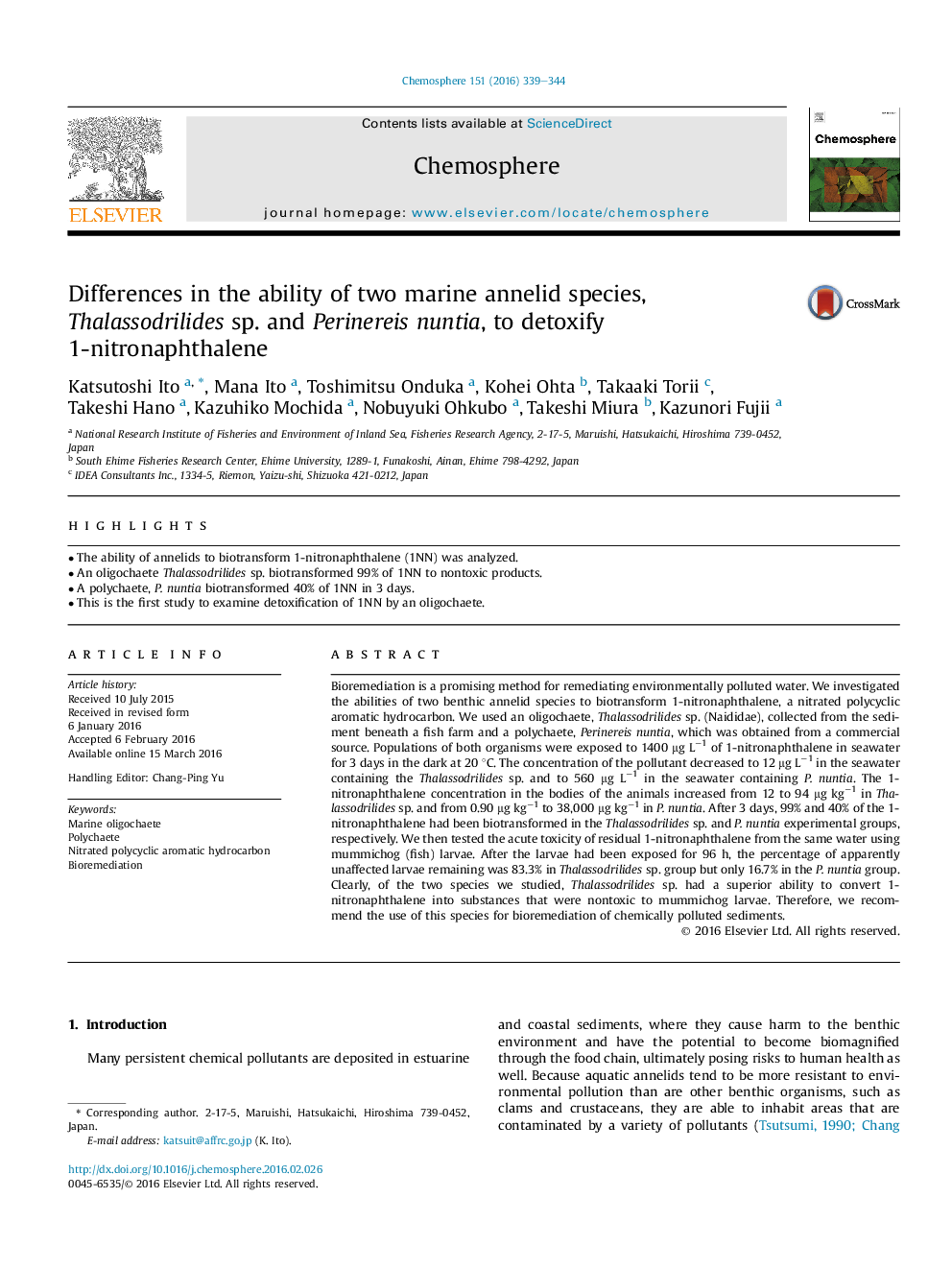| کد مقاله | کد نشریه | سال انتشار | مقاله انگلیسی | نسخه تمام متن |
|---|---|---|---|---|
| 4407782 | 1618820 | 2016 | 6 صفحه PDF | دانلود رایگان |
• The ability of annelids to biotransform 1-nitronaphthalene (1NN) was analyzed.
• An oligochaete Thalassodrilides sp. biotransformed 99% of 1NN to nontoxic products.
• A polychaete, P. nuntia biotransformed 40% of 1NN in 3 days.
• This is the first study to examine detoxification of 1NN by an oligochaete.
Bioremediation is a promising method for remediating environmentally polluted water. We investigated the abilities of two benthic annelid species to biotransform 1-nitronaphthalene, a nitrated polycyclic aromatic hydrocarbon. We used an oligochaete, Thalassodrilides sp. (Naididae), collected from the sediment beneath a fish farm and a polychaete, Perinereis nuntia, which was obtained from a commercial source. Populations of both organisms were exposed to 1400 μg L−1 of 1-nitronaphthalene in seawater for 3 days in the dark at 20 °C. The concentration of the pollutant decreased to 12 μg L−1 in the seawater containing the Thalassodrilides sp. and to 560 μg L−1 in the seawater containing P. nuntia. The 1-nitronaphthalene concentration in the bodies of the animals increased from 12 to 94 μg kg−1 in Thalassodrilides sp. and from 0.90 μg kg−1 to 38,000 μg kg−1 in P. nuntia. After 3 days, 99% and 40% of the 1-nitronaphthalene had been biotransformed in the Thalassodrilides sp. and P. nuntia experimental groups, respectively. We then tested the acute toxicity of residual 1-nitronaphthalene from the same water using mummichog (fish) larvae. After the larvae had been exposed for 96 h, the percentage of apparently unaffected larvae remaining was 83.3% in Thalassodrilides sp. group but only 16.7% in the P. nuntia group. Clearly, of the two species we studied, Thalassodrilides sp. had a superior ability to convert 1-nitronaphthalene into substances that were nontoxic to mummichog larvae. Therefore, we recommend the use of this species for bioremediation of chemically polluted sediments.
Journal: Chemosphere - Volume 151, May 2016, Pages 339–344
